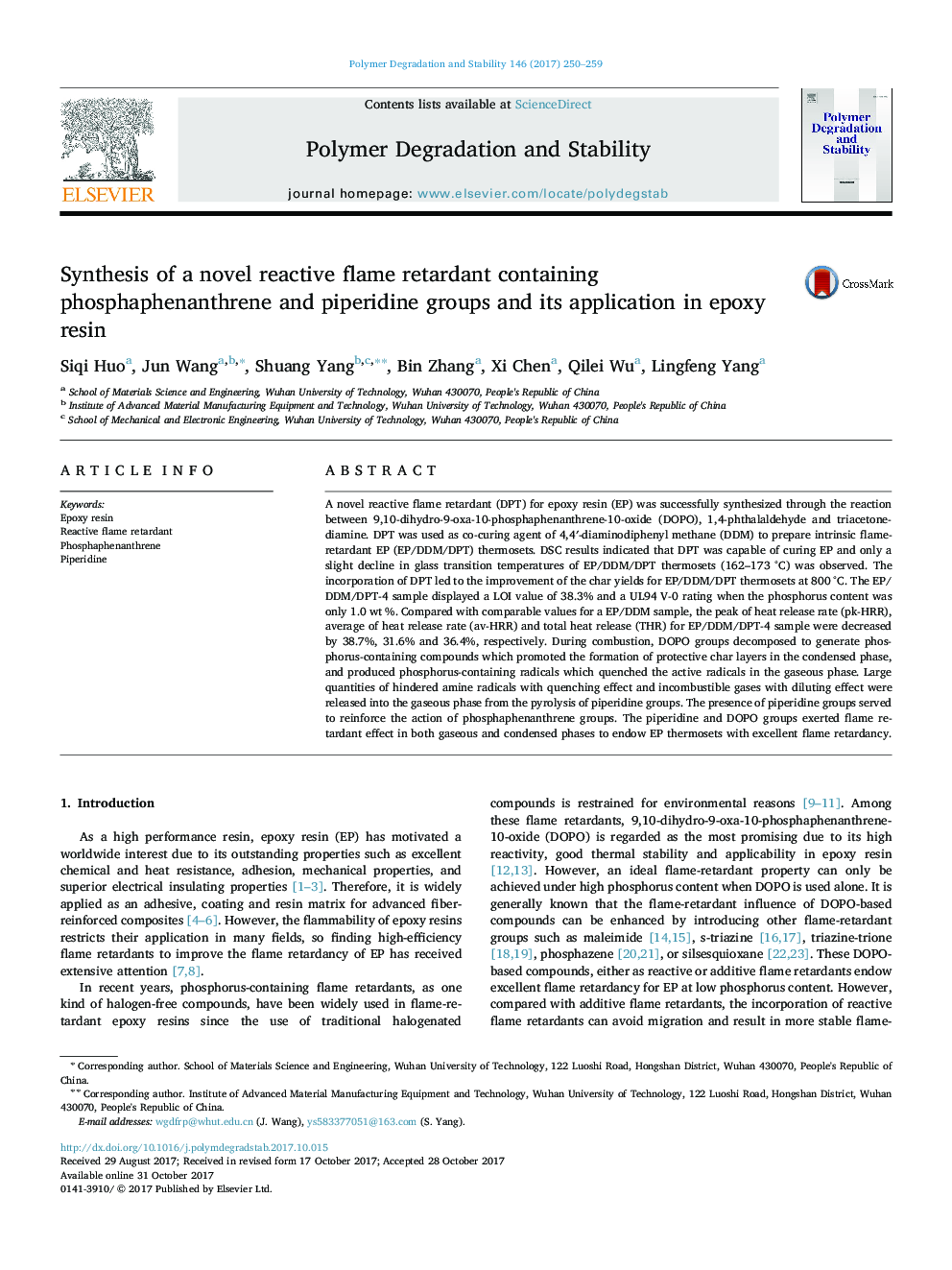| Article ID | Journal | Published Year | Pages | File Type |
|---|---|---|---|---|
| 7824249 | Polymer Degradation and Stability | 2017 | 10 Pages |
Abstract
A novel reactive flame retardant (DPT) for epoxy resin (EP) was successfully synthesized through the reaction between 9,10-dihydro-9-oxa-10-phosphaphenanthrene-10-oxide (DOPO), 1,4-phthalaldehyde and triacetonediamine. DPT was used as co-curing agent of 4,4â²-diaminodiphenyl methane (DDM) to prepare intrinsic flame-retardant EP (EP/DDM/DPT) thermosets. DSC results indicated that DPT was capable of curing EP and only a slight decline in glass transition temperatures of EP/DDM/DPT thermosets (162-173 °C) was observed. The incorporation of DPT led to the improvement of the char yields for EP/DDM/DPT thermosets at 800 °C. The EP/DDM/DPT-4 sample displayed a LOI value of 38.3% and a UL94 V-0 rating when the phosphorus content was only 1.0 wt %. Compared with comparable values for a EP/DDM sample, the peak of heat release rate (pk-HRR), average of heat release rate (av-HRR) and total heat release (THR) for EP/DDM/DPT-4 sample were decreased by 38.7%, 31.6% and 36.4%, respectively. During combustion, DOPO groups decomposed to generate phosphorus-containing compounds which promoted the formation of protective char layers in the condensed phase, and produced phosphorus-containing radicals which quenched the active radicals in the gaseous phase. Large quantities of hindered amine radicals with quenching effect and incombustible gases with diluting effect were released into the gaseous phase from the pyrolysis of piperidine groups. The presence of piperidine groups served to reinforce the action of phosphaphenanthrene groups. The piperidine and DOPO groups exerted flame retardant effect in both gaseous and condensed phases to endow EP thermosets with excellent flame retardancy.
Related Topics
Physical Sciences and Engineering
Chemistry
Organic Chemistry
Authors
Siqi Huo, Jun Wang, Shuang Yang, Bin Zhang, Xi Chen, Qilei Wu, Lingfeng Yang,
